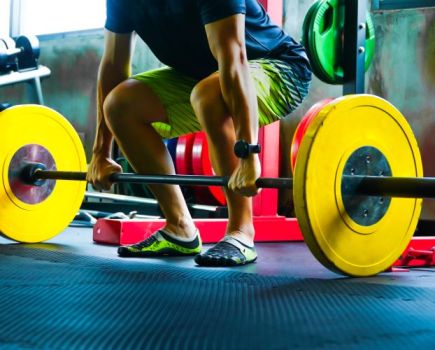When it comes to cycling vs running for improving your fitness, which one comes out on top?
In terms of cardiovascular exercise, two disciplines sit head and shoulders above the rest in terms of popularity – running and cycling. But is one better than the other when it comes to overall fitness gains? And how do they compare in terms of adaptations to your body? We slip on a pair of the best cycling shoes and put cycling vs running for fitness head-to-head to see which comes out on top.
Calories
Cycling works the lower half of your body, whereas the arm-pumping nature of running makes it a full-body exercise. But despite this difference, they’re pretty evenly matched when it comes to calories burned. Research by Harvard found that a 155lb (70kg) person burns 288kcal when running at 5mph for 30 minutes, which is the same calorie expenditure as riding a bike between 12-13.9mph (19.3-22.3kmph) for half an hour. Similarly, upping the speed increases the number of calories burned for both. And the heavier you are, the more calories you’ll burn.
Both can also be performed anaerobically – the dominant energy system used during sprints and weightlifting. Although high-intensity running efforts are shown to reduce total and visceral fat more efficiently than cycling.
Muscles
Running and cycling work the muscles in two different ways. The former is centred around weight-bearing motions, while the latter is resistance-based. They therefore have different outcomes.
Running at a high intensity is shown to increase muscle mass, particularly of the quadriceps, but if you’re more of a moderate-paced plodder, it could counter-intuitively be preventing muscle growth due to the muscle damage caused by pounding the pavement for long durations.
The low-impact nature of cycling means that it doesn’t face the same issues as long-distance running. Studies have shown that it can lead to increased muscle size and strength gain. However, it has a much slower hypertrophy rate than traditional strength training, and therefore takes longer to see results.
Accessibility
We’ve already touched on how running and cycling vary when it comes to their impact on the body. That makes the latter more accessible if you’re returning to exercise or coming back from an injury. However, cost should also be factored in when looking at the overall picture. Both running and cycling can be performed in most gyms on treadmills and static bikes respectively. But if you’re looking to take your exercise outside, cycling has higher barriers to entry. Where running just requires a good pair of running shoes, cycling comes with a long list of gear (including cycling jersey, shorts, bike, shoes and one of the best cycling helmets) before you can even get started, putting it out of reach for some.
Convenience
Both running and cycling have their pros and cons when it comes to convenience. Runs are generally shorter affairs, making them easy to squeeze into an already busy schedule, while rides can easily stretch into hours – particularly when you factor in a break or two along the way. Conversely, the speed and distance you can travel in a relatively short amount of time makes cycling a great incidental form of exercise that can replace day-to-day activities such as commuting – something that you might struggle to do with running.
So is cycling or running better for fitness?
Ultimately, cycling and running are fairly well-balanced when it comes to their fitness gains. Both are great forms of aerobic exercise that will help you burn calories and even help you shed fat with some added intensity. If you’re looking for muscle gains above all else, then cycling edges it, but there are much more time-efficient ways to add muscle strength and mass if that’s your sole target. Overall, which one you choose should be based on what you get the most enjoyment from, and therefore which one you’re going to keep doing consistently. Alternatively, you could opt to do both, and you’ve got yourself a great form of cardiovascular cross-training.







